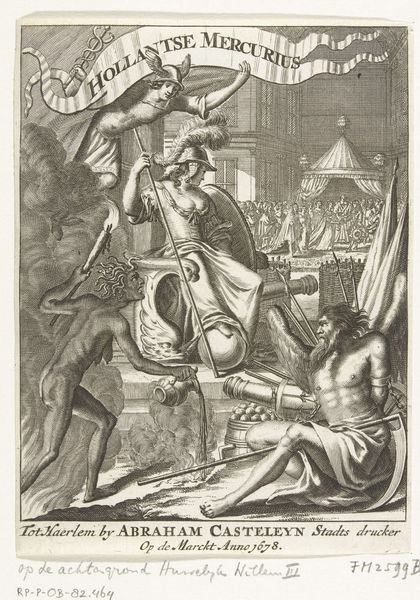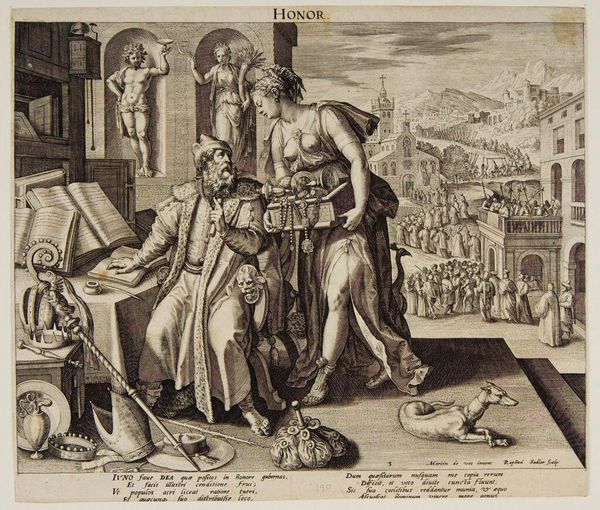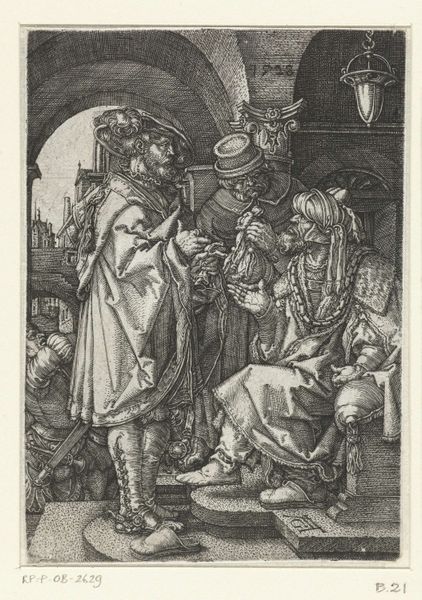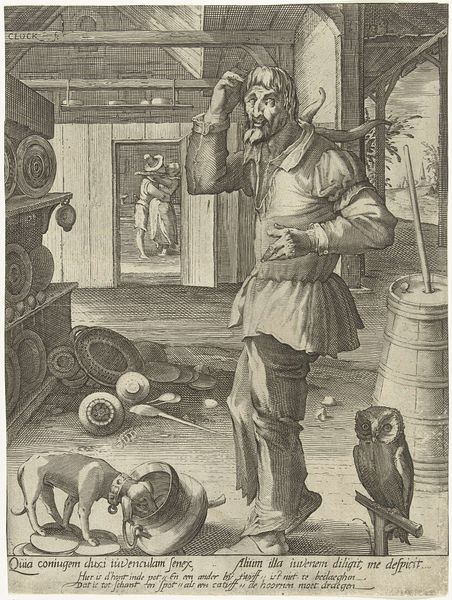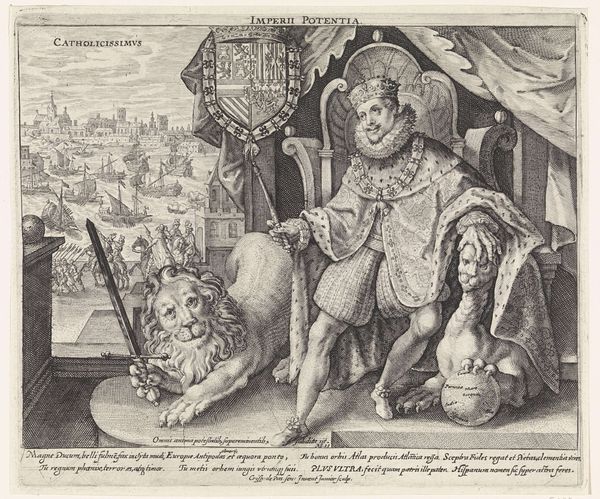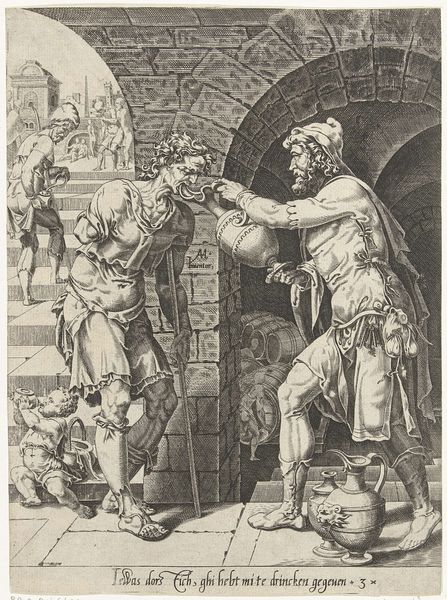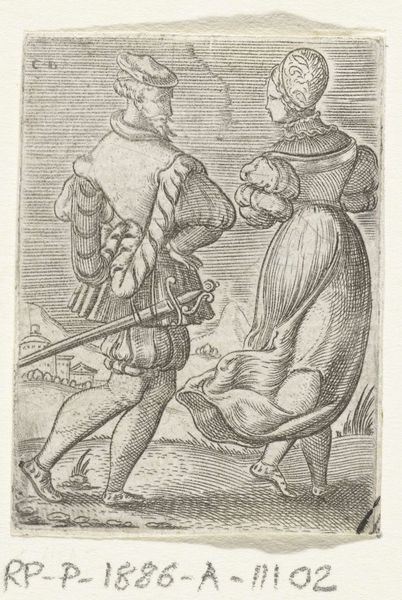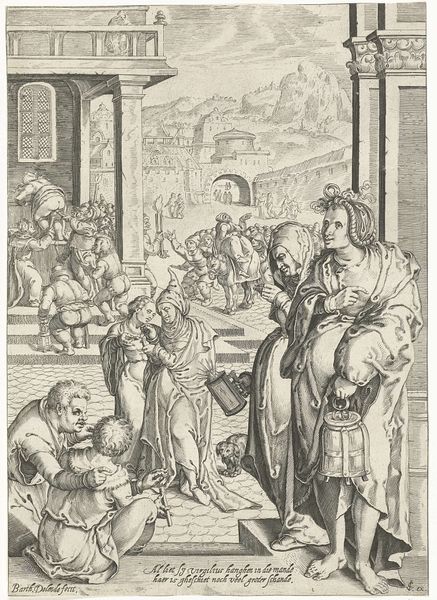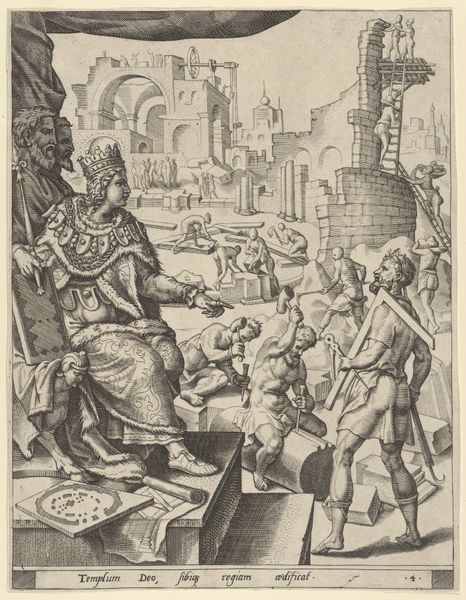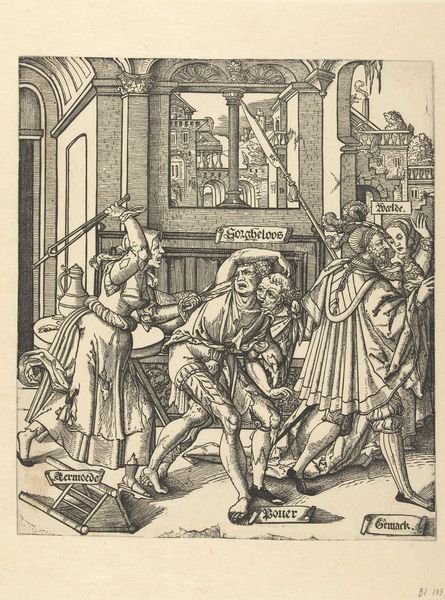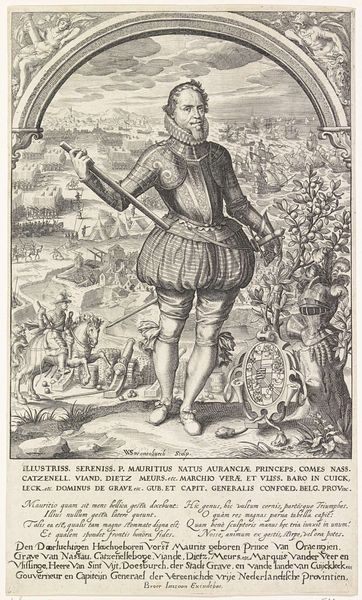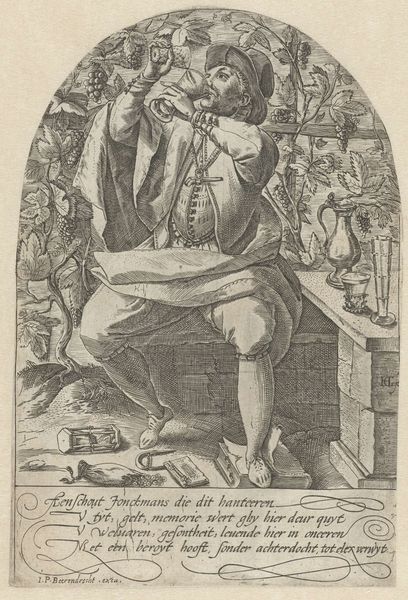
engraving
#
portrait
#
baroque
#
caricature
#
cityscape
#
genre-painting
#
engraving
Dimensions: height 248 mm, width 193 mm
Copyright: Rijks Museum: Open Domain
Curator: This print, entitled "Brillenverkoper," which translates to "The Spectacles Seller," was created by Nicolaes Jansz. Clock in 1602. It now resides here at the Rijksmuseum. Editor: Wow, the density of detail! It's like a miniature world unfolding. At first glance, it feels almost comically bleak, you know? Curator: Absolutely. The scene depicts an itinerant merchant overwhelmed by his wares, quite literally covered in spectacles. What do you read in the visual rhetoric of the spectacles here? Editor: Well, glasses obviously are a potent symbol for insight, perhaps self-awareness... or a desperate attempt to find it. And he's *drowning* in them! To me, it speaks volumes about a society obsessed with seeking clarity, maybe where truth has become a commodity. Curator: Good point! It's quite on par with its moment of Baroque style embracing drama. I see also, in the background, a bustling cityscape that seems strangely indifferent to the spectacle right in front. Is the foreground perhaps an extension of this public place? Editor: I'd venture yes. It creates a sense of separation and detachment – like he's peddling his wares, his "clarity," to a world that can barely even see him or each other. Is that slumped-over figure there representing blindness itself perhaps? Curator: Possibly! There's certainly a caricatured element here, bordering on moral allegory. This artist is asking the viewer what the point of clear sight actually *is* if people refuse to truly see, and maybe how overwhelming data and knowledge does not translate into better judgement. It leaves a somber lasting impression. Editor: It does. In such an information-heavy society, Nicolaes Jansz. Clock prompts us to ask ourselves what real "sight" even entails, and to what end it should lead us. The symbolism is unnerving, yet so deeply familiar, across time.
Comments
No comments
Be the first to comment and join the conversation on the ultimate creative platform.
